According to a news update from the Ministry of Defence, Air Marshal Harv Smyth has been appointed as the next Chief of the Air Staff.
He will take over leadership of the Royal Air Force in August 2025, succeeding Air Chief Marshal Sir Rich Knighton, who has been promoted to Chief of the Defence Staff.
The appointment was approved by His Majesty The King and confirmed by Defence Secretary John Healey. Smyth, who joined the RAF in 1991, spent 15 years as a frontline Harrier pilot and weapons instructor, flying operational missions over Bosnia, Kosovo, Serbia, Iraq and Afghanistan. Since 2015, he has held a series of senior command roles and is currently Deputy Chief of the Defence Staff for Military Strategy and Operations.
“I warmly congratulate Air Marshal Harv Smyth on his appointment as Chief of the Air Staff,” said John Healey. “He has outstanding credentials to lead the RAF in a crucial period of transformation for the force.”
“From spending 15 years as a frontline Harrier pilot and weapons instructor, to flying hundreds of operational missions from both land bases and aircraft carriers, to holding numerous vital command positions, he has served our nation loyally,” he added.
Air Marshal Smyth will take command during a major shift in posture for the RAF, which is preparing for warfighting readiness under the government’s Strategic Defence Review. This includes the recent announcement that the UK will purchase F-35A aircraft and participate in NATO’s nuclear sharing mission.
The outgoing Chief of the Air Staff, Sir Rich Knighton, welcomed his successor: “I am absolutely delighted that Air Marshal Harv Smyth has been selected as the next Chief of the Air Staff, and I have every confidence that he will lead the Royal Air Force brilliantly and make sure we are ready to fly and fight.”
“I know that under his command the Royal Air Force will go from strength to strength to ensure that we are always ready to protect and promote our national interests on the world stage,” Knighton said.
Smyth said: “I am deeply honoured to have been selected as the next Chief of the Air Staff at such an important time for the Royal Air Force. The Strategic Defence Review makes clear the need for us to rapidly evolve and modernise to meet current and future threats.”
“I share in Sir Rich Knighton’s unwavering support for our people and am delighted to have this opportunity to lead our Whole Force as we deliver outstanding Air and Space Power for the UK and NATO.”
The RAF remains globally deployed, with personnel currently active on Operation Shader in Iraq and Syria, deployed in Qatar under the joint Typhoon squadron, and in Eastern Europe supporting NATO’s air policing mission.



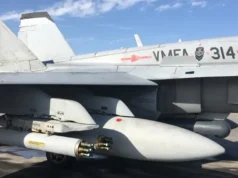

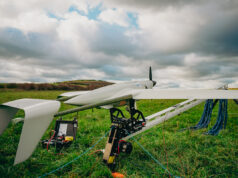
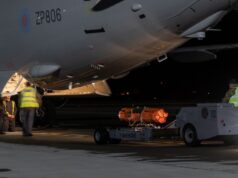
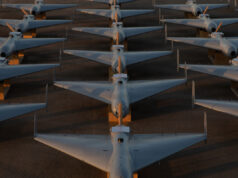
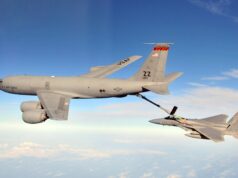
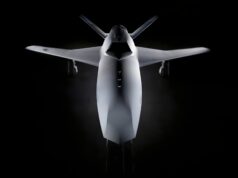

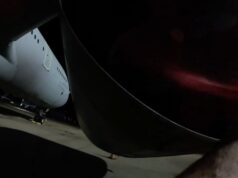
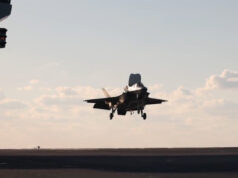

Everybody can earn 250$+ daily… You can earn from 10000-15000 (tel:10000-15000) a month or even more if you work as a full time job…It’s easy, just follow instructions on this page, read it carefully from start to finish… It’s a flexible job but a good earning opportunity..
go to this site home tab for more detail thank you…… 𝐖𝐖𝐖.𝐍𝐄𝐓𝐏𝐀𝐘𝟏.𝐂𝐎𝐌
Congratulations to Air Marshal Harv Smyth on his appointment as Chief of the Air Staff. It’s good to have a fighter pilot with combat experience in charge of the RAF.
Now, lets see if he can solve the fast jet pilot training problems that have plagued the RAF over the past few years. And get more Typhoon airworthy, plus sort the F35B weapon integration issues. Then there are huge problems around perimeter security and command at Brize and elsewhere. GBAD at all RAF/USAF bases. More hardened hangars. Upgraded dispersal plans with fuel and weapons storage. Accelerating ECRS 2. etc etc
“Now, lets see if he can solve the fast jet pilot training problems that have plagued the RAF over the past few years.” This and spares availability really at the big items that can be fixed.
“And get more Typhoon airworthy” I thought availability was actually quite high?
“plus sort the F35B weapon integration issues.” I doubt he will have any leverage on this one. Even USAF, USN and USMC complain about LM’s approach to this.
“Then there are huge problems around perimeter security and command at Brize and elsewhere.” In the great scheme of things fences and sensors are not that expensive.
“GBAD at all RAF/USAF bases.” This is a budgets issue and then who runs it. The reason that I like Land Ceptor under area control is that you don’t need any people on the base. Sea Ceptor is sealed into the canisters with inert gas. If you containerise that and then connect it to an area control system using a synthetic radar picture then you don’t need loads of bods to run the system.
“More hardened hangars.” civils are very, very expensive. They will provide protection from drones if the doors are not open….
“Upgraded dispersal plans with fuel and weapons storage.” This is the kind of thing that local contractors and petrol station contractors can do with a very large digger and civilian plant. The big problem is that once you put the words ‘Construction Contract + Civil Service + Base Security” into a sentence you end up with very few prepared to accept the contract terms and strictures, even less can pass the solvency tests, fewer can be bothered with the paperwork. So BigCo will win the contract and sub it out to the small guy who should have done it at 101 anyway.
“Accelerating ECRS 2. etc etc” money taps problem and production rate and keeping manufacturing and BAE busy. This isn’t a simple radar change it is quite a massive change in Typhoon.
Not that expensive, but can we get someone who csn get the basics right?
I’ve been looking, at various places on the defence estate. Which I do as part of my military interest hobby. Not illegal, one can pull up a seat and a cuppa, and peruse. If I can, those with malign intentions can.
The vulnerable areas on outer fence lines are numerous.
I watched a vid from big Phil Campion ( ex 22 ) on this and it is shocking.
I noted your explanation about fencing at runway ends due to safety and overruns, but a wooden garden fence??
The HAS exist, more on sites not now used by fast air than those that are. And still on MoD estate, I’d like to see thrm refurbed and plans in place to use them.
Most Airfields I visit are huge open and on flat ground, some are out in the country and others are nearer towns, villages and Citys, the ones near us are huge and mostly American but still have similar issues. If you want to protect an airfield, you have to think about any pottential tresspasers entry options and the possible modes of transport they might choose ( Bulldozer, lorry, E Scooter ) Maybe we should do a Trump style wall and mine fields ?
I was almost sensible there.
Almost.
22 have done that back in the day when testing airfield defences.
Which is a SF task.
I read they hijacked a lorry and just drove in through the fence.
Walls and minefields would help, but not really economically feasible? Where do you start and end?
Ah, so you’re Anglia then.
You have 5. 2 American, 3 British. If you want to add Feltwell that’s 6 but that is not an airfield now.
“ I noted your explanation about fencing at runway ends due to safety and overruns, but a wooden garden fence??”
Basically you can’t have that section heavily reinforced or with a tank trap ditch etc.
You could perfectly well have an higher more secure fence that is designed to flat pack when it is hit from inside the airfield with hinge points in the uprights.
You can’t have fixed 12 foot fence with razor on the top as what happens when you have a canopy loss and end up with an over run?
So there are simple solutions – or we can do the favourite thing – hand wringing!
Right…even a higher fence as you describe is an improvement.
I think the standard is a mix of hand wringing and doing it right depending on where you look.
For instance, I wrongly assumed that ones primary locations, and especially Brize as a single node and point of failure, would have motion sensors as standard.
Appears not?
It is also the case that, with such huge perimeters, there are more sensitive operational areas within that have additional security. But not in this case, with such easy access to a flight line with nobody on the night watch at that location it seems.
No doubt no one will lose their head and all will be quietly forgotten. Cynical, sorry.
And that’s why they gave never really invested heavily on airfield defences, because as SF have proven, nothing is going to stop a determined enemy from getting in, not even the highest quality 8ft barbwired fencing. Critical national infrastructure comes under extremely high security standards that is very very very expensive. We are talking nuclear facility standards. And to roll that out across RAF stations isn’t practical or cost effective. Lessons will be learnt from Brize Norton without a doubt. But i doubt we will see a sudden huge investment.
Hi mate.
That might account for the outer fence for RAF and RN stations, which we know are big.
And yes, not practical putting what’s around Aldermaston round an RAF Station.
But what about further in?
Even the SF in that lorry ramming the fence were challenged.
These imbeciles weren’t even spotted.
Where is a QRF? Cameras. Dogs.
With HAS sites you at least have an added barbed wire perimeter, the HAS themselves, and back in the day, Yarnold Bunkers. ( I still see these postbox like structures around )
But none of that applies to the likes of aircraft at Waddington, Lossi, and Brize. They are too big.
And we’re not even on to Drone attacks off a lorry, I’m still thinking saboteur on foot stuff.
Multiple kayers and increasing levels of security. Mobile response forces. Expensive? Certainly; however, less than hypothetical losses. Eventually, 1.5% of GDP will be allocated to addressing these issues.
Not really.
Two layers of decent fences with a cable stay crash barrier would do the job round most of the perimeter.
Ultimately this isn’t to guard against US/UK level SF but against people whom unfriendlies have bribed or cajoled into the grey zone.
ATM it is just far too easy to wander into RAF bases.
Eventually the current Fighter Mafia across US services will find a way to repay LM in kind for services (ahem) rendered to date on the F-35 Program. Uncertain re the specific manner of punishment, but the hammer will eventually drop. Guaranteed. As a superior once observed: “Don’t get angry, get even.”
Sorry response re LM performance inserted further down thread.
You obviously got overlooked for the job then ! 😁
Another yes man, will do as he is told, not rock the boat, they are all the same regardless of trade etc. Why our military leaders so wet weak and just not able to speak up?. They accept any thing no matter how crap, then once out the job complain about what they let slip by them while on the way to house of Lords.
The defence review looks good but most know it will be a mess. Money wasted on bespoke stuff, other things not ordered or not enough ordered. Half arsed and some stuff will just be gapped for 3 to 5 years a bit like AWACS etc, just do with out and hope its not needed then buy too few to get the job done but say its a vast improvement on the old kit, a step change.
I get your point about “another yes man.” It’s frustrating how so many four-star generals only seem to find their voice after retirement—suddenly full of opinions about the very branch they spent their entire careers serving and ultimately leading.
At the same time, the real work happens behind closed doors. We’re only ever exposed to the party line. Sure, they can speak out to some extent while still in post, but if they’re seen to overstep the mark, just like in business, they’re swiftly removed. That’s something we’re seeing more and more in the U.S. these days.
Adding to that, throughout modern history, those in power have often failed to take military leaders as seriously as they should. The political elite tend to think they’re experts on everything. It doesn’t help that much of the general public shows little interest in the armed forces or the threats we face—until the bombs and bullets start flying.
Then suddenly, public support for the military surges, and politicians realize—almost overnight that they have no idea what to do. And just like that, military leadership has a voice again… until the war is over. Then the cycle repeats.
Does the size of the RAF justify having a 4 Star anymore? Too much Top Brass and not enough effectors to actually do the job of protecting the UK. Sad to say but the UK Armed Forces are more keen on WOKEism than doing a job of a Warrior anymore. Sad days for a once true PRIDE of the Country. 🙁
Wish him Luck in the Post ,a good Start would be more Typhoons ,HAS ,GBAD ,Security for all airfields and to Get the F35b to it’s full potential and above all more numbers of Aircraft and manpower .Now that’s what needs to be done how much will be done .IN fairness with like most governments he’ll have one hand tied behind is back because of the HMG not wanting hand in money pot. Still let’s wait and see 🕵